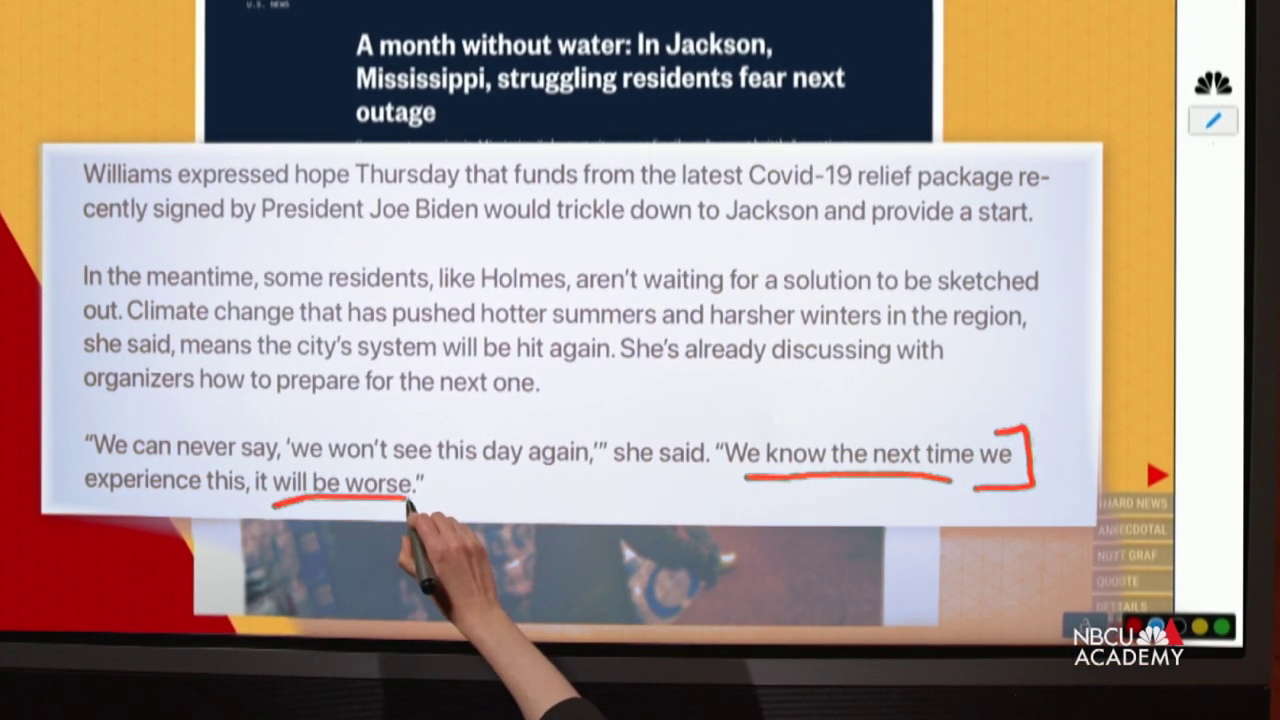How do you write great online news articles? Learn about writing style and the elements of a news article from Julie Shapiro, assistant managing editor for NBC News Digital Enterprise.
Journalistic writing should clearly inform the reader about a noteworthy event or development. Reporters should write online news stories in a way that’s engaging enough to keep the reader’s attention while also delivering the important facts. The following are the essential elements.
The lede
The story should begin in an interesting way that is directly tied to the main point. This is usually referred to as a “lede” or “lead.” Readers have a lot of competition for their attention, so the story needs to grab them immediately. Use a dramatic anecdote, a surprising fact or an important breaking news update.
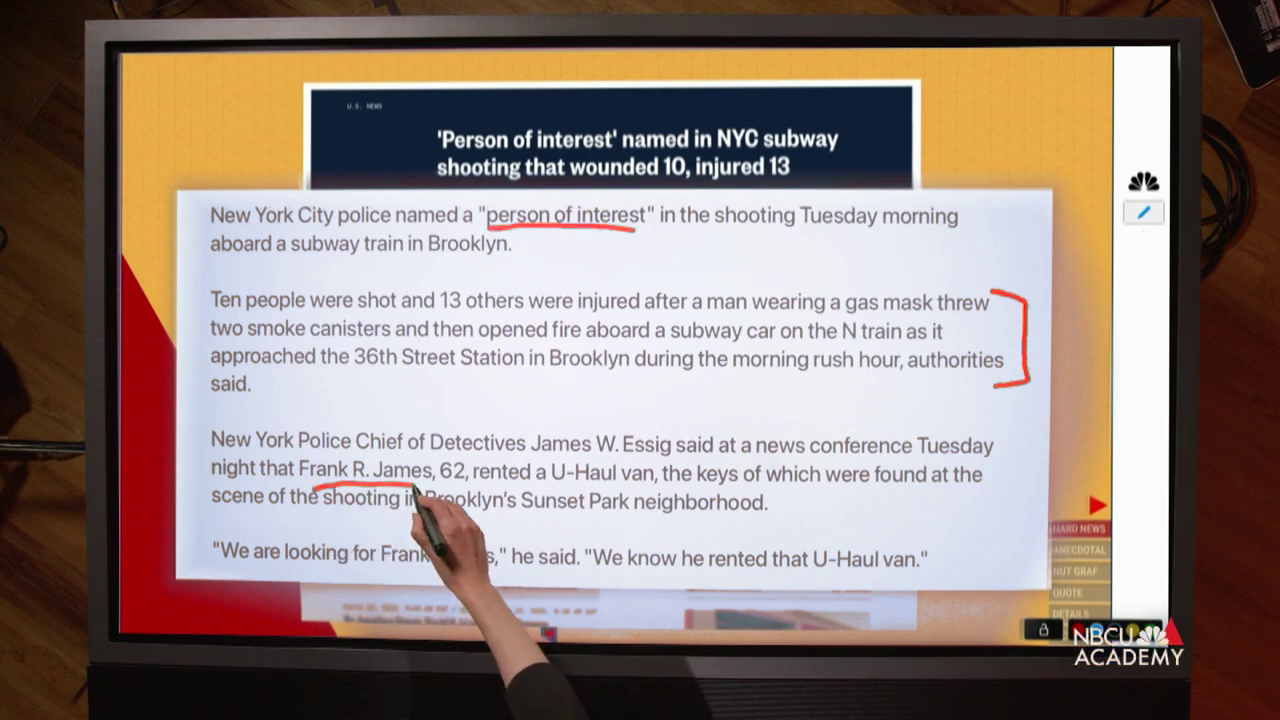
The nut graph
The nut graph is the heart of the story. It explains what the news is about, why it’s timely and why readers should care. The nut graph can be one sentence or several paragraphs and should include the answers to who, what, when, where and why. It often places the new developments in context by describing the bigger picture.
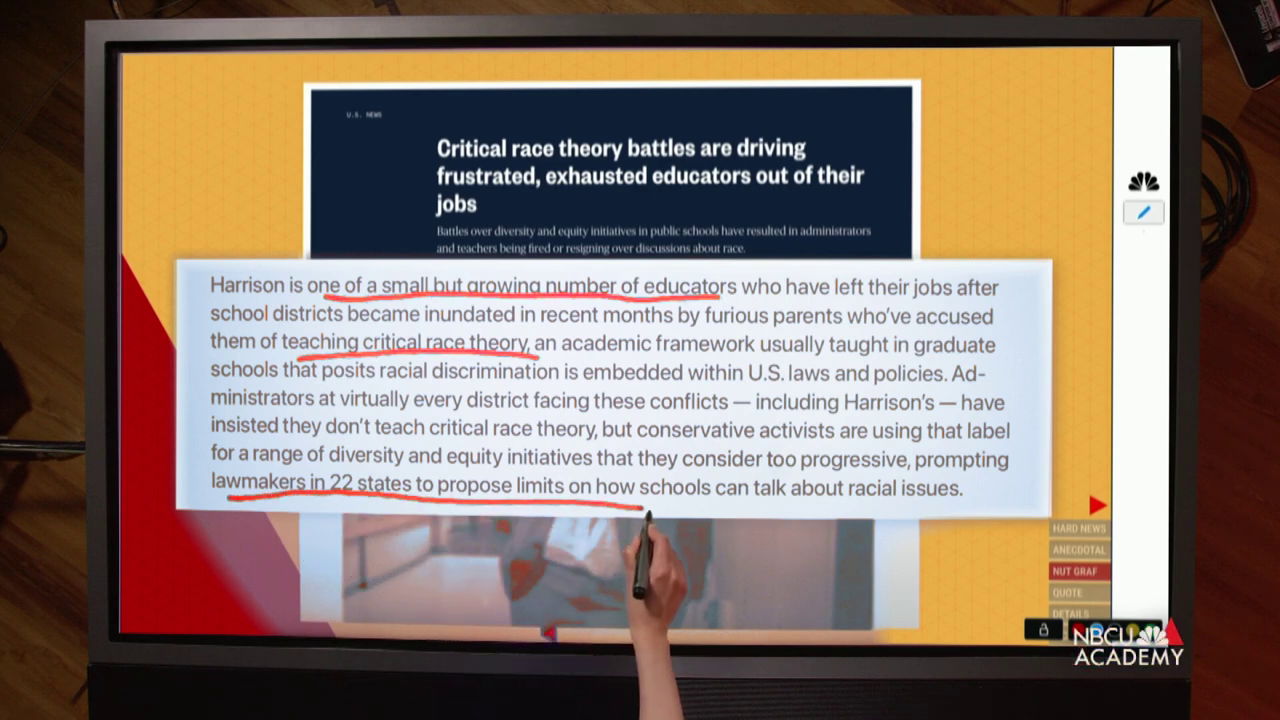
The body
After the lede and nut graph, the rest of the story should start to fall into place. Rely on expert voices, analysis and key details.
Quotes
Quotes can be powerful, but use them sparingly so that they stand out. In general, a writer can paraphrase a point better than a character can. A good quote does more than just convey information — it can add color, drama and depth.
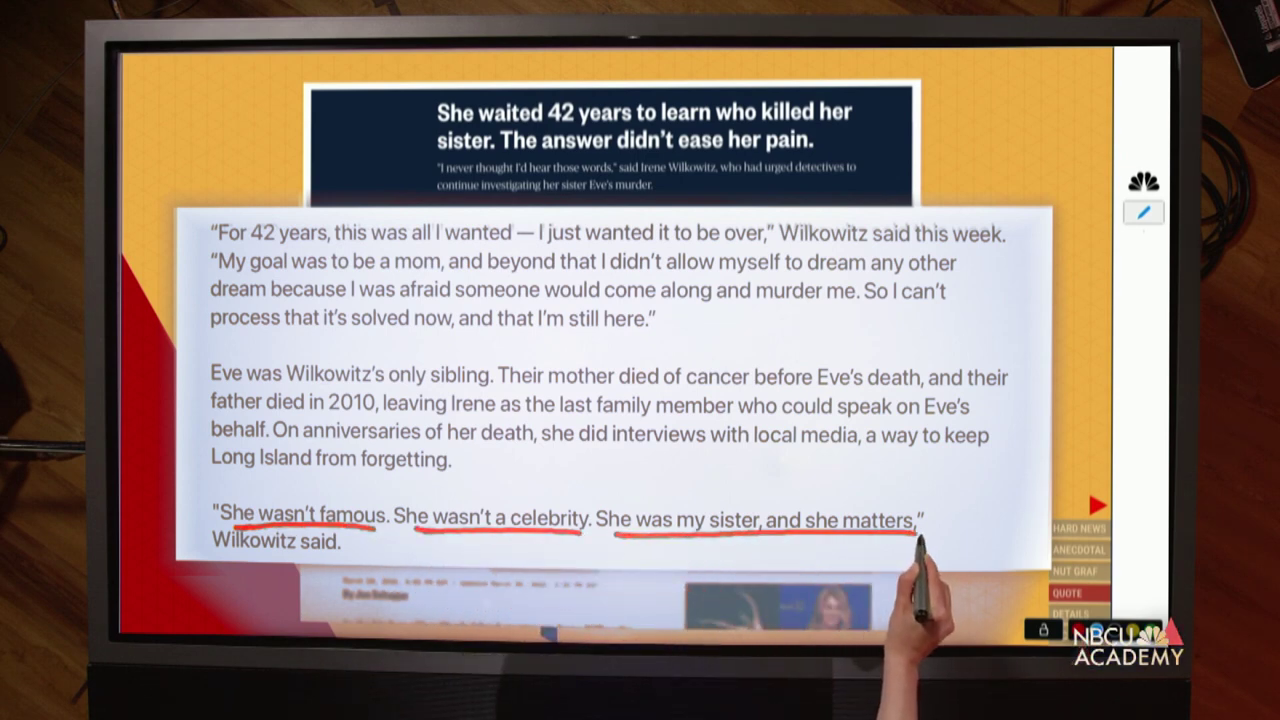
Selective details
The rest of the story expands on the points made in the nut graph. Informative details could include examples, scenes and background information or sensory descriptions of the news scene. But choose wisely — too much detail can make the reader lose interest.
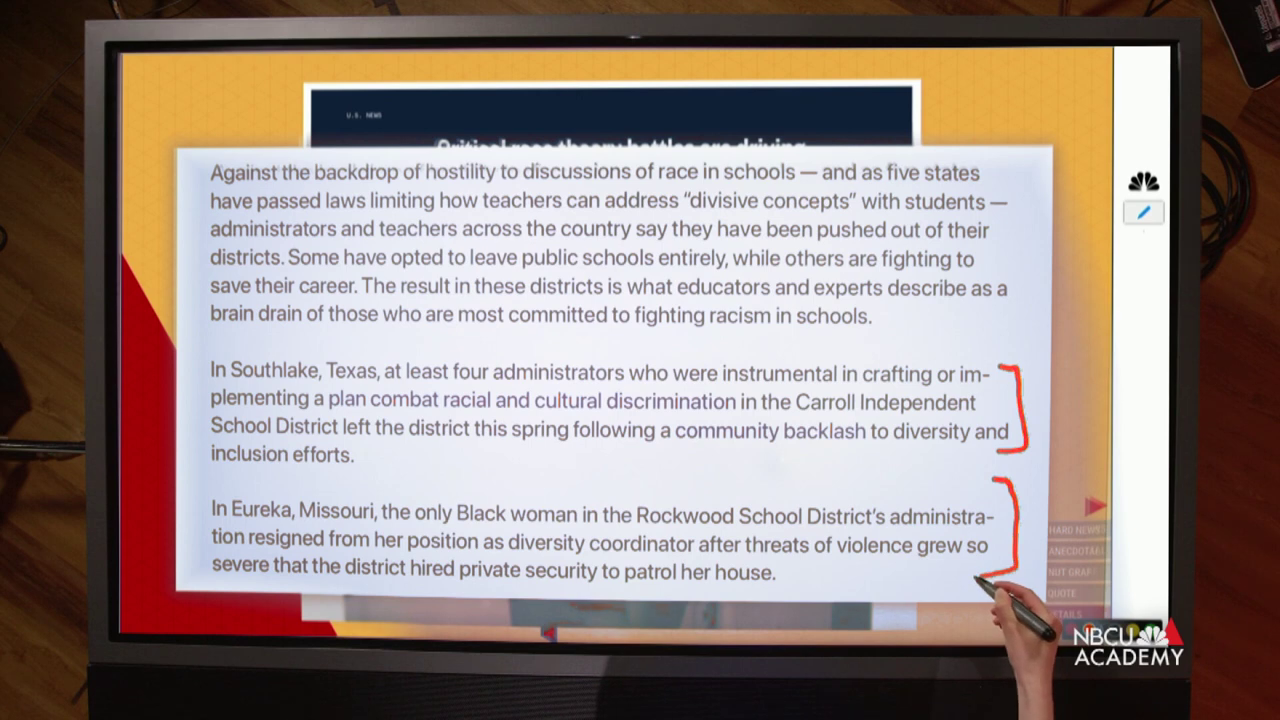
Clear writing
Write without jargon, and keep sentences clear and direct. If a sentence needs to be read more than once to understand its meaning, trim it down or take it out. Don’t include words or phrases that would be unfamiliar to most readers.
The kicker
End with something memorable. A short breaking news story may not need a formal ending, or kicker, but most stories should end with something memorable. A punchy quote is a good option. Other options include a forward-looking line on what’s next for an issue or character, or one last memorable takeaway for the reader.
